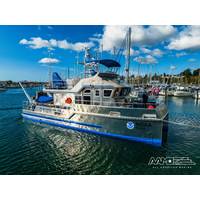
All American Marine Launches New Research Vessel for NOAA
for processing data. On board the vessel’s main deck is a fully equipped galley and comfortable dinette with a settee/bunk, kitchenette and wet head.Ron Wille, All American Marine president & COO, said, “At All American Marine, we maintain our unwavering dedication to pioneering manufacturing methods and continuously incorporating cutting-edge technology into reliable, functional vessels. We are thrilled to deliver another vessel for NOAA. This new addition will significantly enhance Gray’s Reef’s eco-conscious research initiatives, further bolstering their conservation endeavors
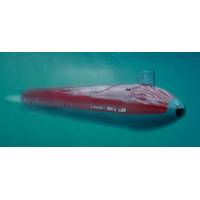
XLUUV: If You Build It, They Will Buy
the use of additive manufacturing (3D printing) to fabricate the LD’s outer hull, as well as its internal components and substructures. With the Dive acquisition, Anduril is now uniquely positioned to offer the RAN a near-term undersea warfare solution by combining the Dive-LD’s manufacturing methods with Anduril’s advanced technologies. “There is a clear need for an XL-AUV built in Australia, for Australia,” said Palmer Luckey, Anduril Founder. “The XL-AUV will harness the latest developments in autonomy, edge computing, sensor fusion, propulsion, and robotics
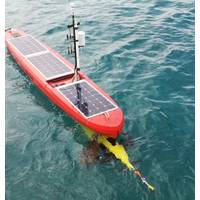
Unmanned Marine Systems, Squared
the use of 3D printing, says Nichol, which not only makes producing parts (mostly with a nylon resin) easier (e.g. moulds don’t have to be made to create some parts and the amount of complex machining is reduced), but also allows for more flexible design, i.e. it’s not constrained by manufacturing methods. The stern cone, fins and hull mounts have all been 3D printed, for example. However, while 3D printing has been adopted for many AutoNaut components, they’re reverting to glass fibre for the foils for the extreme environments USV, mainly for additional strength, says Nichol.Other work
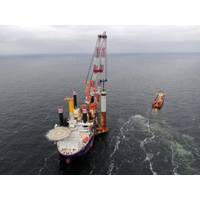
Van Oord Installs Slip Joint Foundation at Borssele Wind Farm Site
therefore opens up the possibility of manufacturing larger foundations for the next generation of wind turbines with existing manufacturing facilities and installing them at deep-sea locations using existing vessels."The (conical) sections that make the connection are produced using standard manufacturing methods. The Slip Joint provides a rapid, simple and safe installation solution in combination with reduced maintenance for the duration of the project."

Tidal Turbines: Is Better Ballast the Answer?
keyplayers. The entire sector is continuously evolving, in a constant search of better products. The Author Ralitsa Peycheva is a technical content manager at Farinia Group, interested in forging and casting techniques, latest machinery and tools; curious about new manufacturing methods; respecting high-quality engineering
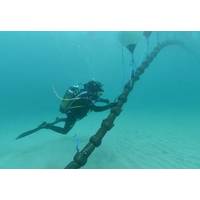
Submarine Power Cables Protection
flexible can be tailored to different types of cables, different weight and different seabed conditions. The Author Ralitsa Peycheva is a technical content manager at Farinia Group, interested in forging and casting techniques, latest machinery and tools; curious about new manufacturing methods; respecting high-quality engineering.
Makai Expands Marine Corrosion Lab
of Hawaii’s Hawaii Corrosion Laboratory. The original focus of the MCL was developing marine heat exchangers. Under a contract with the Hawaii Natural Energy Institute, sponsored by the Office of Naval Research, corrosion engineers at the lab were tasked with identifying novel alloys and manufacturing methods for heat exchangers that would be corrosion-resistant, low-cost, compact and highly efficient. Samples of both ferrous and nonferrous alloys made with various joining and manufacturing methods (brazed joints and friction-stir welded joints) as well as various surface conditions (rolled, machined

Makai Expands Marine Corrosion Laboratory
;s Hawaii Corrosion Laboratory. The original focus of the MCL was developing marine heat exchangers. Under a contract with the Hawaii Natural Energy Institute, sponsored by the Office of Naval Research, corrosion engineers at the lab were tasked with identifying novel alloys and manufacturing methods for heat exchangers that would be corrosion-resistant, low-cost, compact and highly efficient. Samples of both ferrous and nonferrous alloys made with various joining and manufacturing methods (brazed joints and friction-stir welded joints) as well as various surface conditions (rolled, machined


 February 2025
February 2025





